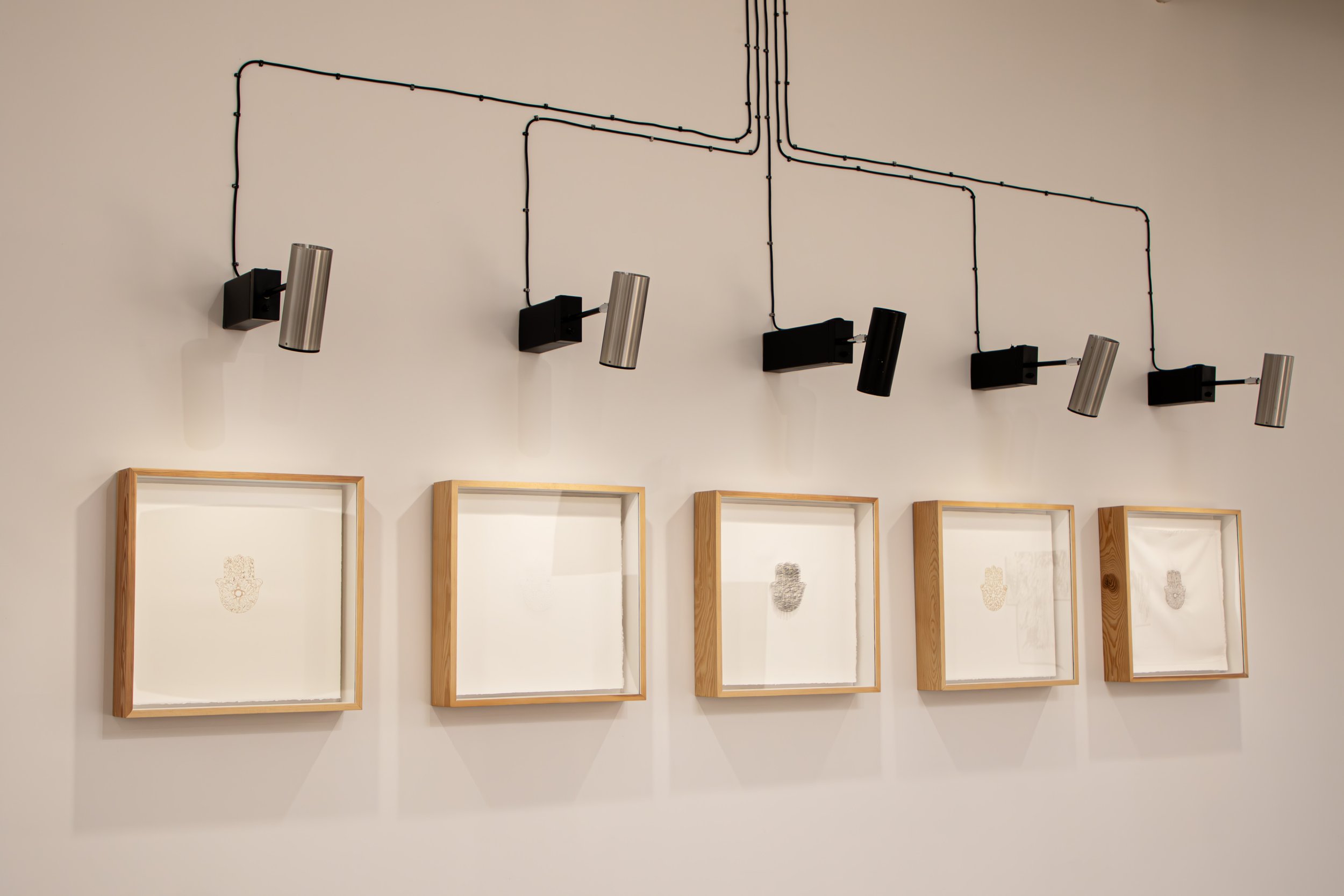The symbolic figure Khomsa is often associated with femininity; it is shaped as an amulet and understood as a form of protection through feminine hands. This image is a pre-Islamic archetype that has been adopted into the Arab Islamic tradition, although it has no direct relation to religion.
In this artwork, the artist Nadia Kaabi-Linke pays homage to her grandmother Fatima. The five shadow boxes are conceived as biographical modules or episodes. From right to left: hair, nails, needles, pinholes, and blood. The repetitive and serial effect of the boxes, as well as the identical size and position of the represented hands, convey the sense that her grandmother’s destiny is shared by many women of her generation.
The idea for this work arose when Kaabi-Linke noticed the steady increase in the number of women wearing the hijab (veil) in her home country of Tunisia, a garment that was rare during her childhood and youth. Past, present, and future seem to coexist. Although recent clothing habits may appear similar to those of the past, the revival of certain lifestyles and traditions suggests emerging modes of being and behavior that are bound to differ from those of her grandmother’s generation.
Each shadow box is individually lit by a projector resembling a security camera. The electric structure is deliberately made visible, suggesting an overarching system of control and surveillance. This cold, metallic lighting installation contrasts sharply with the organic materials used to create the filigree and delicate ornaments of the five hands.










